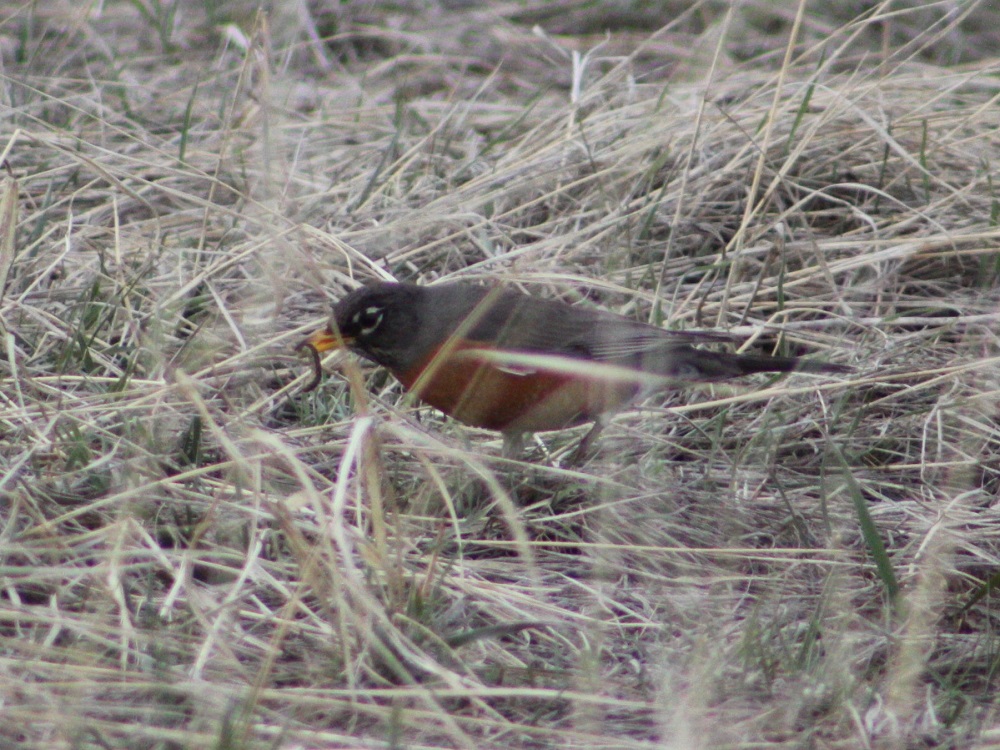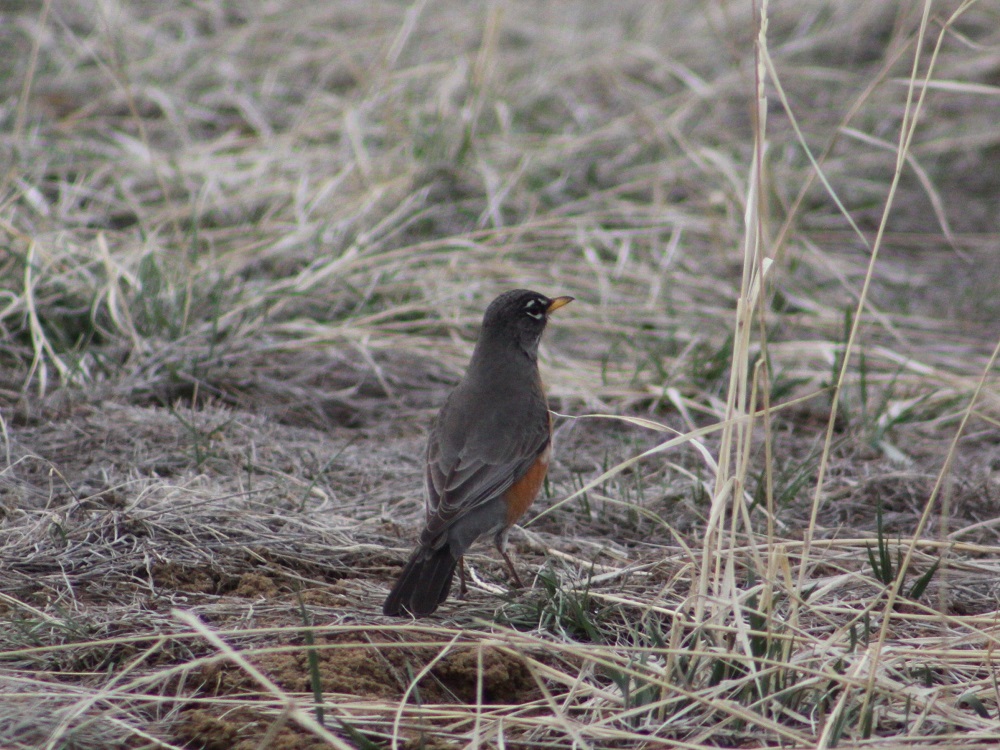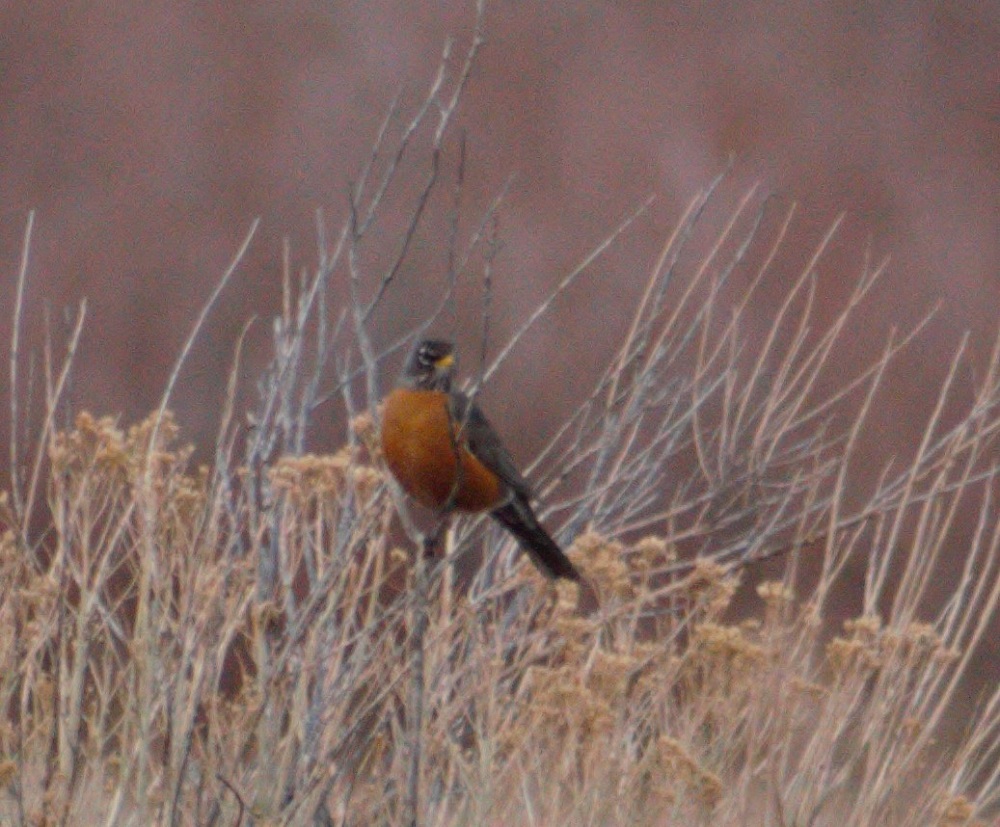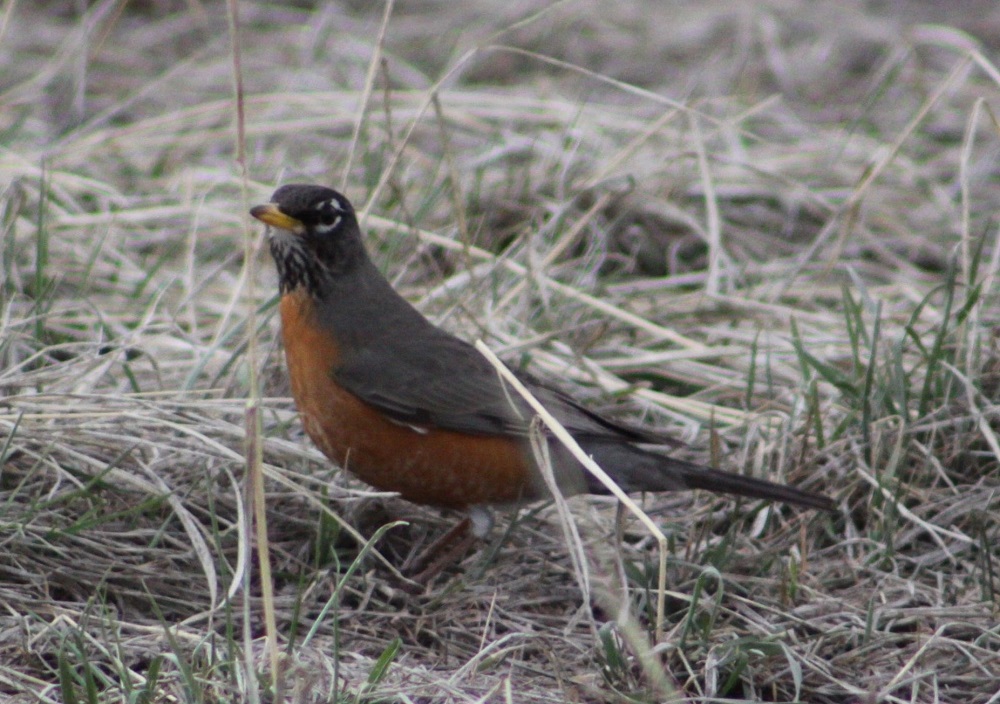American Robins are among the most well-known birds, and because of that are often used to judge the size of other birds. With their dark heads, wings and tail and their “red” breast (which varies from orange-brown to dark brick red), they are easily recognized.
Although they mostly forage for worms on the ground, they are frequently also spotted in the tops of trees. In the summer, they are relatively tame, allowing people to come close to them however, in the winter, they are less approachable.
The American Robin song has the sound of a clear flute, and is a repetition of two notes: swing up, swing down, swing up, swing down.

American Robins have been seen year-round at the Willow Spring Open Space, although their numbers are much larger in the Spring, Summer and Fall. Those that migrate can return as early as February, and wait to leave until October or November.
Some stay over winter and have been seen in flocks on lawns. When available, they eat mostly insects such as earthworms, beetles and grasshoppers, switching to more fruit and berries in their winter diet.
They are in the Passeriformes Order, or passerines, which includes perching birds and songbirds. Birds in this order have a toe structure that is well-adapted to perching, by being 3 toes facing forward and 1 toe facing backwards on each foot.
How to Recognize an American Robin

American Robins are about 8-11 inches long with a wingspan of 12-16″. Male American Robins have dark gray backs, brick-red breasts and a yellow bill. They have a white eye ring, which accentuates their large eyes. Female American Robins are not as brightly colored as the males, with their breasts more orange-brown, but they also have the eye ring which can be used for identification.
American Robins are in the Turdidae family (thrushes). Birds in this family are are generally large-eyed, slender-billed and have strong legs for their foraging on the ground. They are known for their beautiful fluting songs. Thrushes include bluebirds and wood thrushes along with the robins.
Through the Seasons – migration and nesting
Most American Robins make a short migration to the southern U.S. or as far as Mexico (mostly Arizona and New Mexico from this area). They arrive in February as the first harbingers of spring and depart in October-November. The Robins that we see here in January have actually migrated down to here from Canada!
They begin nesting in April and May and raise 1 to 2 broods per year. The female builds a nest in places as varied as a fork of a tree, on a fence post, a window ledge or the top of a light fixture. The outside of the nest is made up of dead grass and twigs with mud to hold it together. The nest is lined with soft, fine grasses.
The female lays about 3-4 bright blue eggs which are about 1″ long. The female incubates the eggs for about 12-14 days, and the baby birds leave the nest when they are 2 weeks old. The fledglings stay on the ground and are fed mostly by the male for another 10-15 days, with the female preparing for the next brood.
Where to find in Willow Spring Open Space
I have seen American Robins foraging in a large group on the hill that makes up the south side of the Englewood Dam, and also in the grass near the path leading down into the Open Space from Homestead Parkway. They can also sometimes be spotted in the tops of trees as they sing their morning songs.

Did You Know?
The American Robin is the state bird for 3 states – Michigan, Connecticut and Wisconsin! It is often seen on state flags, seals and other symbols.
References and Further Reading
- Wild About Rocky Mountain Birds: A Youth’s Guide to the Rocky Mountain States, by Adele Porter, 2012
- Peterson First Guide to Birds of North America, by Roger Tory Peterson, 1986
- The Sibley Field Guide to Birds of Western North America: Second Edition, by David Allen Sibley, 2016
- Kaufman Field Guide to Birds of North America, by Kenn Kaufman, 2000
- Pete Dunne’s Essential Field Guide Companion, by Pete Dunne, 2006
- Great Courses, The National Geographic Guide to Birding in North America, Course 7782, James Currie


